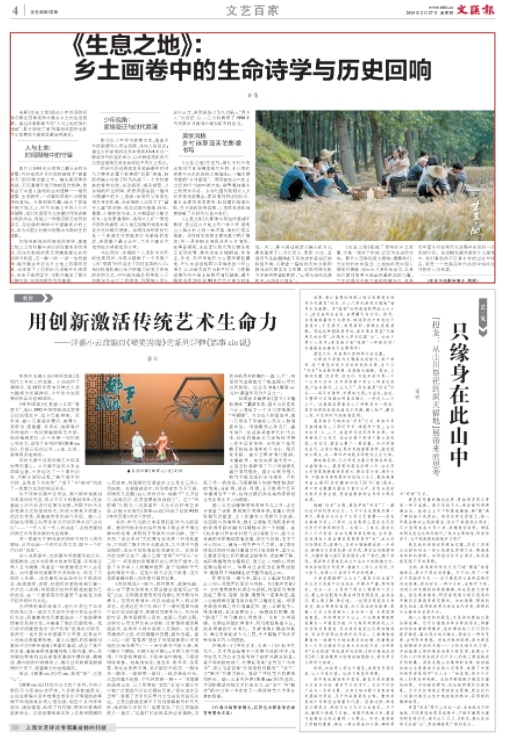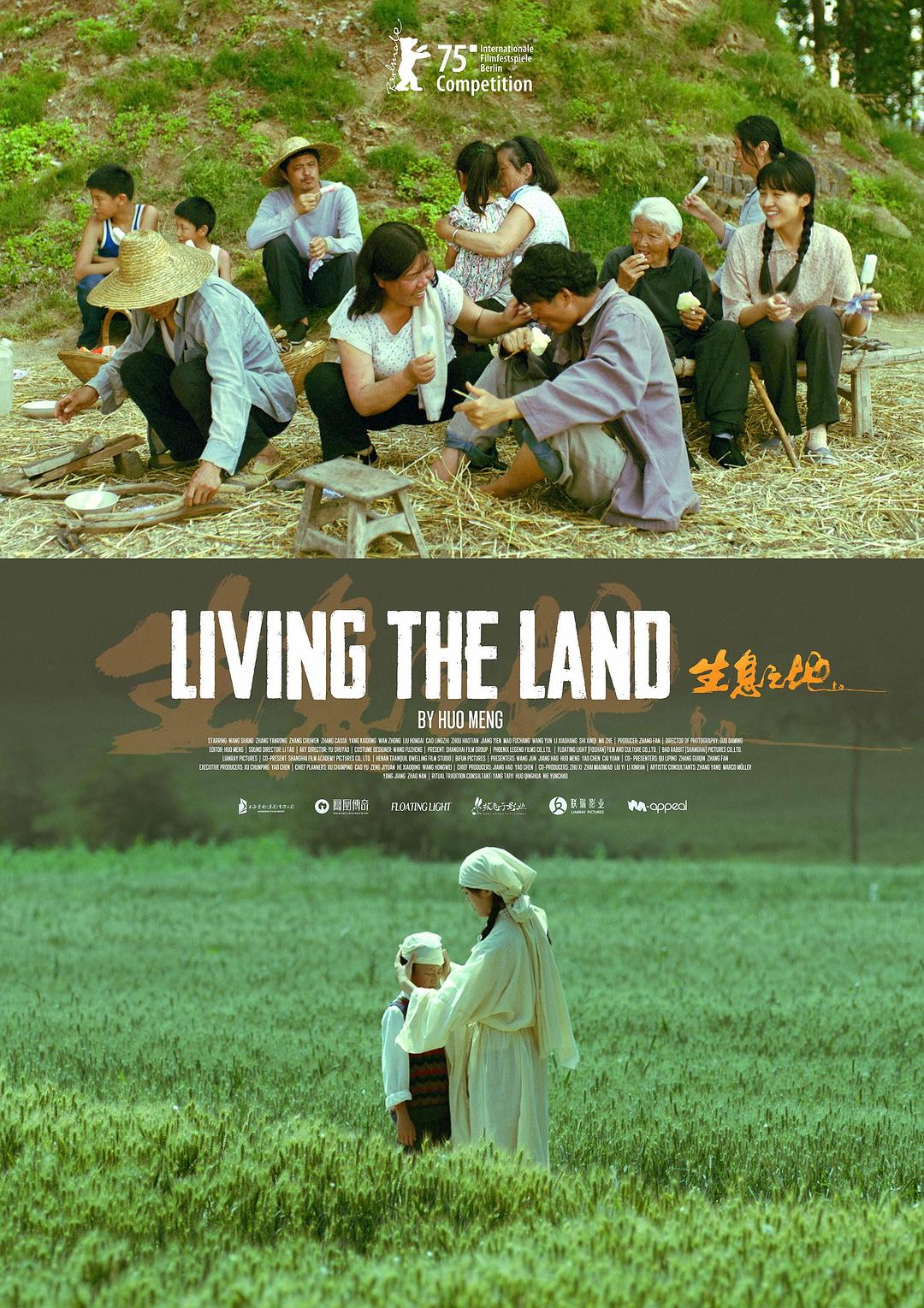


The film "Land of Habitat" depicts the life of the countryside in eastern Henan through the perspective of the young Xu Chuang. The film writes "the simple emotions between people and the land" through poetic images. The film won the Silver Bear Award for Best Director in the main competition unit of the 75th Berlin International Film Festival.
People and Land: Watching in the Condensation of Time
The film is set in Bawangtai Village, Zhoukou, Henan Province in 1991, and cleverly condenses the passage of time into the alternation of the four seasons of "spring, summer, autumn and winter". The changing of the seasons in the camera not only follows the natural laws of the universe, but also fits the unique life logic of the Chinese people - marriage, funerals, birth, aging, illness and death, everything is like the return of leaves to their roots. From spring plowing to winter storage, the people in the Central Plains and in the cracks of the times are no longer silent. They are not afraid of the impact of the wave of modernization on traditional agricultural civilization, but watch over the land of their hometown in a forbearing and strong attitude, tied by blood, and become the epitome of countless villages in the process of rural revitalization in China.
As shown in the movie poster, the graves and funeral ceremonies on the heavy land tell of the passing of life, while the vibrant wheat fields symbolize the continuation and reincarnation of life. This picture of stillness and movement, death and life, implies the cycle of life on this land. It also reflects people's rooting and growth in the course of the times, and their endless perseverance, setting a tone for the film that seems calm and restrained but is actually rich and warm.
A teenager's perspective: family changes and the ripples of the times
The film uses a teenager as the narrative subject, observing and experiencing the various aspects of life through the teenager's eyes and heart; observing 1991, a year facing great changes in the times, from the perspective of the teenager Xu Chuang, and restoring the rural changes that are embedded in his life experience with a calm and objective eye.
The work cleverly places the major events of the era in the wave of reform and opening up in the "background" perspective of the narrative, and instead focuses the camera on the spring ploughing and autumn harvest, birth, aging, illness and death, weddings and funerals of a rural family in the torrent of the times, and paints a rural picture scroll in the slight waves of the times with what Xu Chuang sees, hears, thinks and feels: Xu Chuang's parents went to the south to seek opportunities, leaving a mark of "left-behind children" on Xu Chuang's life; he lives with his grandmother, grandfather, uncle, and aunt here, and becomes a close friend with Lai Dan; when it rains during the wheat harvest, he and the adults experience the pain of loss together, but can enjoy the comfort of sharing popsicles during a short rest. Xu Chuang's perspective reflects the simple and pure life of an ordinary rural family, and even the daily life of traditional farming families in the entire Bawangtai Village and even in eastern Henan.
At the same time, Xu Chuang's personal growth keeps pace with the development of the times, providing the audience with a limited entry point for intervention and "observation" of rural changes under the changing times: the ability of mechanized production such as tractors has changed the traditional farming methods, and more and more young people in the village are beginning to have the idea of working outside the village. After following their parents out of the countryside and arriving in the county town, they will fall into the confusion of being "strangers". This film reproduces the real rural life in the early 1990s from a small perspective.
Aesthetic style: the image writing of rural poetic reality
"The Land of Life" focuses on the countryside that is undergoing generational change and the wave of modernization, depicting a poetic "rural picture" between the changing seasons and the flow of life. The Central Plains in the 1990s shown in the camera embodies the aesthetic style of poetic countryside. The natural landscape of the countryside and the daily humanities are perfectly integrated. The tomb-moving ceremony of Qingming Festival in spring, the golden rolling wheat waves in summer, the new autumn harvest in autumn, and the white snow in winter use the poetic changing of the four seasons as a metaphor for the life and changes of the countryside.
The image writing of "Land of Habitat" is poetic but not suspended. Through the daily life of individuals on this land, it presents an ordinary and simple realistic texture between people and villages. This realistic texture mainly comes from two dimensions: one is non-professional actors and their dialect interpretation. During the preparation period, the main creative team visited the eastern Henan region several times to collect folk songs and select scenes, and finally selected Yongcheng, Chenguanzhuang, Wolong, Shuangqiao and other places as the main filming locations, and selected non-professional actors from the local people of Yongcheng. The Henan dialect was used as the film dialogue, trying to capture the most affectionate connection between the actors and the Central Plains, and restore the rural life in Henan in the 1990s to the greatest extent. Second, the film truly presents the soil, wheat fields, and villages in the north through long-shot motion, facing the transformation pains that traditional rural areas have experienced under the impact of the wave of modernization, and sketching a realistic picture of the disappearance of traditional agricultural civilization. As praised by the Berlin Film Festival judges, "it keeps the audience immersed in it and unable to look away."
"The Land of the Living" goes beyond a simple rural narrative. It is an epic about time, memory and life. The film uses the cycle of the four seasons as a metaphor to remind us that no matter how the times change, the land is always the root of the Chinese spirit, and the endless vitality is the deepest power when we face changes and challenges. It is not only an affectionate confession of the Central Plains, but also a profound questioning of the fate of Chinese villages in the process of modernization. In this poetic rural painting, we see not only the past and present of the countryside, but also the original intention and hope that a nation has always adhered to in the torrent of the times.
(The author is a PhD and professor of film studies)


